Giochi dell'Oca e di percorso
(by Luigi Ciompi & Adrian Seville)
(by Luigi Ciompi & Adrian Seville)

|
Giochi dell'Oca e di percorso
(by Luigi Ciompi & Adrian Seville) |

|
 |

Torna alla ricerca giochi (back to game search) |
 |
| Noble (The) Game of the Elephant and Castle or Travelling in Asia (fac-simile) | ||
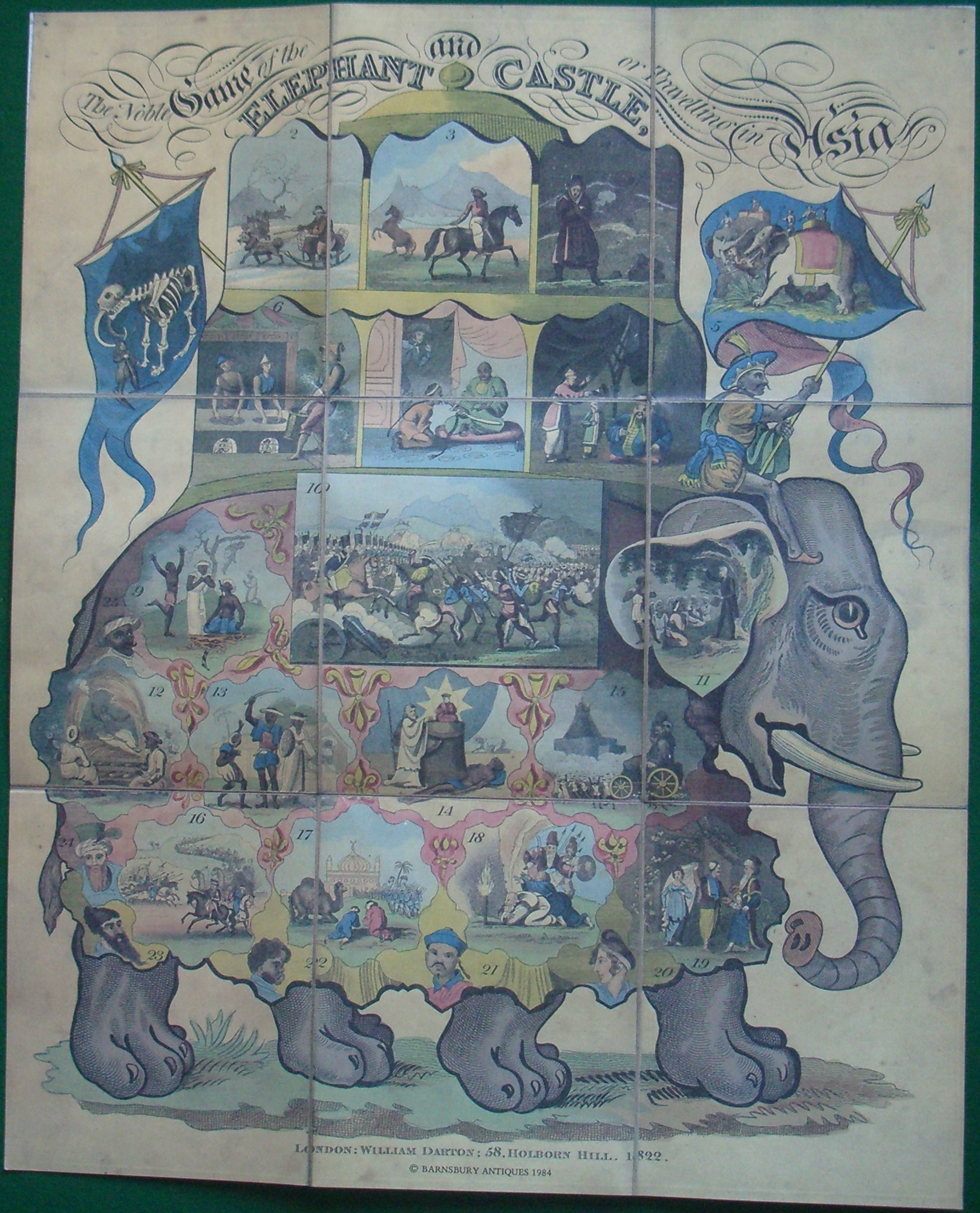 |
Versione stampabile
 |
Invia una segnalazione

|
 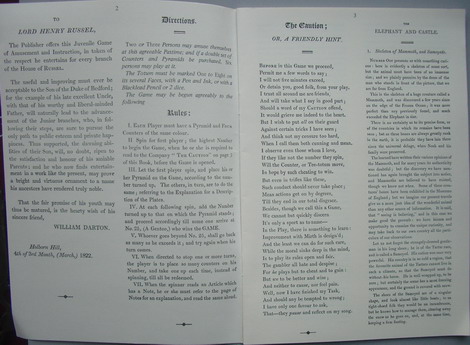 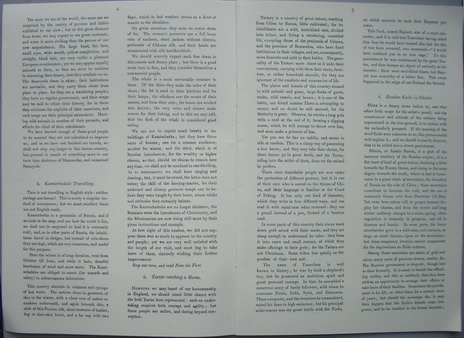 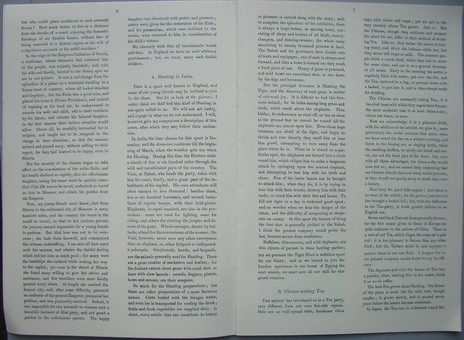 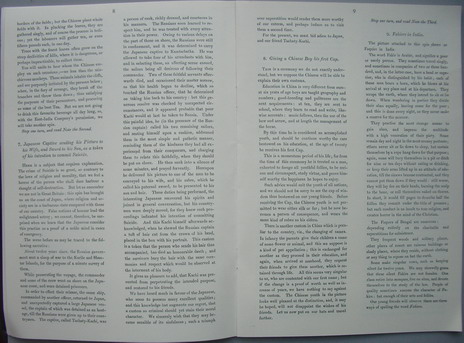 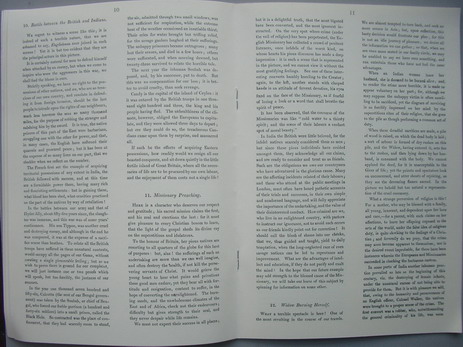 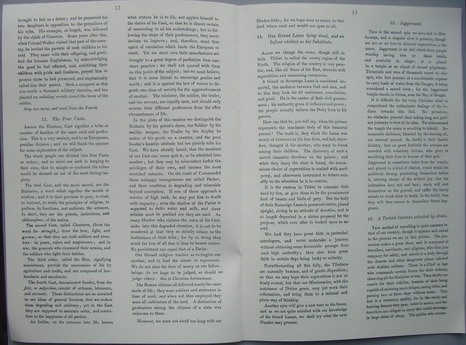  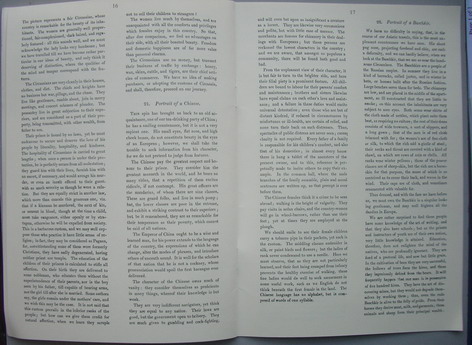 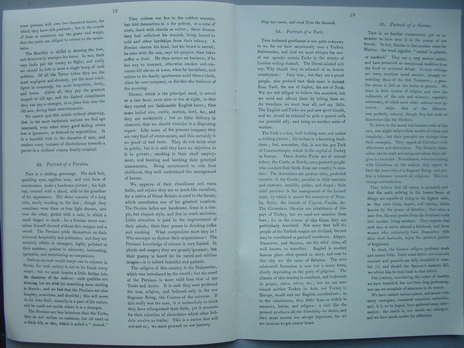  |
primo autore: | Anonimo |
| secondo autore: | Darton William | |
| anno: | 1822 | |
| luogo: |
Inghilterra-Londra |
|
| periodo: | XIX secolo (1°/4) | |
| percorso: | Percorso di 25 caselle | |
| materiale: | carta incollata su tela (engraving on paper with linen backing) | |
| dimensioni: | 495X405 | |
| stampa: | Litografia colorata a mano (hand-coloured engraving) | |
| luogo acquisto: | ||
| data acquisto: | ||
| dimensioni confezione: | ||
| numero caselle: | 25 | |
| categoria: | Viaggi, escursioni, località, musei, monumenti, turismo | |
| tipo di gioco: | Gioco di percorso | |
| editore: | Darton William 58 Holborn Hill | |
| stampatore: | Darton William 58 Holborn Hill, George Smallfield, Hackney (Rules) | |
| proprietario: | Collezione E. C. | |
| autore delle foto: | E. C. | |
| numero di catalogo: | 1278 | |
| descrizione: |
Gioco di percorso di 25 caselle numerate distribuite sul corpo di un elefante (questo esemplare è una riproduzione "Barnsbury Antiques 1984"). REGOLE: non riportate sul tavoliere. CASELLE: mute. REFERENZA 1 "The Noble Game of the Elephant and Castle or Travelling in Asia". (V&A Museum). This is a particularly attractive race game with an interesting use of an elephant's body to illustrate the playing surface. There are only 24 playing spaces, but the rules booklet has 84 pages packed with information covering Asian customs, events and persons of note. The purpose of the game as set out in its subtitle is to combine 'amusement with instruction for youth of both sexes'. Physical description Design: engraving, coloured by hand N°of squares: 25 Squares illustrated: all Square numbering: all Squares titled: in booklet Place of Origin: London Date: 1822 Artist/maker: Darton, William Materials and Techniques: Hand-coloured engraved paper on linen Dimensions: Length: 49.5 cm; width: 40.5 cm Object history note: playing surface shows an elephant, surmounted by a houdah and Indian. 24 compartments depicting a custom, event or personnage from Asia. Slip case of card with a coloured engraved label of an elephant and 2 natives in a landscape. The game stresses learning through reading as the booklet has 84 pages of text to accompany 24 compartments. Historical context note Rewards: extra turns Forfeits: missing one to 4 turns when counters are used; backward movement when instructed; reading from booklet N°of Players: 1-3; or 6 Equipment required: marker or pyramid for each player; teetotum marked 1 to 8 and four counters for each player in different colours Rules placement: booklet, published by George Smallfield, Hackney Descriptive line: Hand coloured geographical game, Elephant and Castle, published in England by William Darton in 1822 Attribution Note: Rules booklet published by George Smallfield, Hackney REFERENZA 2 WHITEHOUSE, Francis Reginald Beaman, (pag. 45): ELEPHANT AND CASTLE or Travelling in Asia. London. William Darton, 58 Holborn Hill. 1822. An engraving size 16 in X 20 in, hand-coloured, cut into 9 pieces, mounted on linen and contained in slip-in case with picture label on front. The 25 panels grouped over an elephant as a background, form a race track, each panel is described at length in the booklet of 84 pages. Its title page is inscribed “To Lord Henry Russel. The Publisher offers this Juvenile Game of Amusement and Instruction in token of the respect he entertains for every branch of the House of Russel". It proceeds: “The useful and improving must ever be acceptable to the Son of the Duke of Bedford” … and concludes: "That the fair promise of his youth may thus be matured is the heart wish of his sincere friend, WILLIAM DARTON Holborn Hill 4th of 3rd month (March) 1822." REFERENZA 3 "I misteri dell'Oriente, che hanno dato luogo ad una illustrazione d'immaginazione, possono scoprirsi nel "Nobile gioco dell'elefante e del castello o viaggiare in Asia" edito da William Darton nel 1822. Questo gioco insiste particolarmente sull'apprendimento attraverso la lettura; un libretto di 84 pagine accompagna le 24 caselle che si trovano in questa stampa colorata a mano." (GOODFELLOW Caroline) REFERENZA 4 "Les mystères de l'Orient, donnant lieu à une illustration imaginative, peuvent se découvrir dans "The Noble Game of the Elephant and Castle or Travelling in Asia" (Le Noble jeu de l'éléphant et du chateau ou Voyager en Inde) édité par William Darton en 1822. Ce jeu insiste particulièrement sur l'apprentissage par la lecture, un livret de 84 pages de texte accompagnant les 24 compartiments qui se trouvent sur cette gravure colorée à la main." (GOODFELLOW Caroline) REFERENZA 5 "The mysteries of the Orient, discovered through the use of an imaginative illustration, are to be found in "The Noble Game of the Elephant and Castle or Travelling in Asia", published by William Darton in 1822. This game definitely stresses learning through reading, as the booklet as 84 pages of text to accompany the 24 compartments shown on this hand-coloured engraving." (GOODFELLOW Caroline) REFERENZA 6 "The Noble Game of the Elephant and Castle or Travelling in Asia" - "Das edle Spiel von Elephant and Castle oder: Reisen durch Asien". London, 1822 Lithografie, Handkoloriert,49,5X40,5 cm Verlag: William Darton Sammlung: Victoria and Albert Museum, London (Inv.-Nr.: CIRC.231&A-1964) Der Name mutet so exzentrisch an wie das Spiel selbst "Elephant and Castle" ist der Name eines Londoner Stadtteils, den bereits Shakespeare erwaehnt, das Emblem war auch auf dem Innungshaus einer Sehmiedegilde in London zu sehen. Als Castle wird schliesslich auch der Hochsitz auf einem Kampfelefanten bezeichnet, heide Begriffe scheinen zudem mit dem Schachspiel in Verbindung zu stehen. Das Spiel informiert ueber wichtige historische Ereignisse in Asien, ueber Landschaften und die Bewohner sowie ueber ihre Gebraeuche. Die Lord Henry Russell, Sohn des Duke of Bedford, gewidmete Reise fuehurt zwar nur ueber 25 Felder, aber auch durch eine 84-seitige (!) Broschuere. Es handelt sich also eher um ein Buch mit beigefuegtem Spielplan als umgekehrt. Der Spielplan ist in die Gestalt eines Elefanten eingefasst. Form und Umfang des Buchs sind fuer Spiele im georgianischen und viktorianischen England nichts Ungewoehnliches. lm gleichen Jahr erschien bei Darton etwa das hochdekorative The Delicious Game of Fruit Basket, in dem die moralisierenden Inhalte am Spielplan in Form eines Fruchtkorbes mit Vogel und allerlei Blueten praesentiert werden. Dem Spiel liegt eine Broschuere mit 72 Seiten bei. Wie viele andere Reisespiele gibt sich Elephant and Castle skeptisch gegenueber Gluecksspielen. Ein Gedlcht (The Caution or A friendly Hint), das den Regeln vorangestellt ist, soll vor Spielbeginn verlesen werden. Es warnt vor Betrug und Hasardeuren. Die Beschreibungen selbst erfolgen ganz aus britischer Perspektive. ln lockerem, fast heiterem Erzaehlton werden kulturelle Differenzen ausgeleuchtet und unterschiedlich beurteilt. Die chinesische Zubereitung von Tee etwa wird ebenso bewundert wie die Tigerjagd ("sufficient sport"), entschieden abgelehnt werden indische Witwenverbrennungen ("a perversion of religion"), Fakire ("religion in its most degenerated state") und Japan ("where religion and society are in a barbarous state"). Zur Eigenart des Spiels gehoert auch die Figur des Erzaehlers: Es ist der Elefant selbst, "das weise Tier", das erzaehlt und in dessen Koerper die Bilder eingeschrieben sind. Spielregeln Es koennen bis zu sechs Spieler teilnehmen. Benoetigt wird ein Kreisel mit acht Feldern, markiert mit 1-8. (Anm.: Der Kreisel kann durch Karten mir Zahlen von 1 bis 8 ersetzt werden, die verdeckt aufgeIegt und gezogen werden) Jeder Spieler muss eine Spielfigur (einen Reisenden) und vier Spielmarken haben. Wer die hoechste Zahl hat, beginnt. Auf den Feldern 2, 6, 8, 19 muss man 1 x aussetzen oder 1 Spielmarke in die Kassa zahlen, bis alle Spielmarken aufgebraucht sind; wer auf die Felder 12, 17 oder 23 gelangt, muss 2 x aussetzen oder 2 Marken bezahlen. Kommt ein Spieler auf eines dieser sieben Felder, dann muss er seinen Mitspielern eine der sieben. Endnoten in der Broschuere vorlesen. (Anm. : Die Endnoten enthalten Wissenswertes ueber die jeweilige Station, sind jedoch natuerlich nur noch von historischem Interesse. Diese Regel liesse sich aktualisieren, indem der jeweilige Spieler eine Geschichre zum Bild erfinden muss oden nachdem er sich kundig gemacht har, eine Frage zum Thema des Feldes an die Mitspieler stellt. Wenn sie diese nicht beantworten koennen, erhaelt er seinen Einsatz zurueck). Wer das Feld 25 als Erster erreicht, gewinnt. Wenn ein Spieler diese Zahl ueberwirft, muss er die ueberschuessige Zahl vom Ziel aus wieder zurueckgehen. Felder 1 Mammutskelett und Samojeden. 2 Reisen durch Kamzschatka. 3 Tatar, der ein Pferd faengt. 4 Russisches Exil in Sibirien. 5 Jagen in Indien. 6 Chinese, der Tee zubereitet. 7 Japanischer Gefangener, der seiner Frau sein Bild, seinem Sohn sein Schwert schickt, als Zeichen, dass er vorhat, Selbstmord zu begehen. 8 Ein chinesischer Junge erhaelt seine erste Kappe. 9 Fakire in Indiein. 10 Schlacht zwischen den Briten und lndern. 11 Missionar, der predigt. 12 Witwe, die sich selbst verbrennt. 13 Die vier Kasten. 14 Ein grosser Lama liegt tot da, und ein Saeugling wird zu seinem Nachfolger erhoben. 15 Jaggernaut (= hinduistische Gottheit. 16 Eine tuerkische Karawane, von Arabern attackiert. 17 Pilgerreise nach Mekka. 18 Guebres, oder Anhaenger des Feuers, ueberrascht von Mohammedanern aus Persien. 19 Ein Tscherkesse, der verkauft wird. 20 Portraet eines Tscherkessen. 21 Portraet eines Chinesen. 22 Portraet eines Baschkiren. 23 Portraet eines Persers, 24 Portraet eines Tuerken. 25 Portraet eines Gentoo (= Hindus). (Ernst Strouhal) Exhibitions: - "Instruction and Delight: Children's Games from the Ellen and Arthur Liman Collection" (Yale Center for British Art, 17 January-23 May, 2019). |
|
| bibliografia: |
1) WHITEHAUSE, F.R.B.: "Table Games of Georgian and Victorian Days", London, Peter Garnett, 1951. 2) GOODFELLOW, Caroline: "A Collector's Guide to Games and Puzzles". Secaucus, New Jersey, Chartwell Books-London, Quintet Publishing Limited 1991. 3) GOODFELLOW, Caroline: "The Development of the English Board Game, 1770-1850", in Board Games Studies 1, 1998. 4) GOODFELLOW, Caroline: "Jeux de société. Le guide du collectionneur des jeux de société depuis le XVIIIe siècle jusqu’à nos jours", (Edizione francese) Carrousel MS, 2001. 5) SEVILLE, Adrian: "The Game of Goose: and its influence on cartographical race games" Journal of the International Map Collectors' Society, Winter 2008 N°115 2008. 6) SEVILLE, Adrian: "The geographical Jeux de l'Oie of Europe." In "Belgeo" 2008 3-4 2008. 7) GOODFELLOW, Caroline: "How We Played: Games From Childhood Past", History Press, 2012. 8) QUINN, Brian - CARTWRIGHT, William: "Geographic Board Games". Geospatial Science Research 3. School of Mathematical and Geospatial Science, RMIT University, Australia. December 2014. 9) SEVILLE, Adrian: "The Royal Game of the Goose four hundred years of printed Board Games". Catalogue of an Exhibition at the Grolier Club, February 23 - May 14, 2016. 10) LIMAN, Ellen: "Georgian and Victorian Board Games: The Liman Collection", Pointed Leaf Press, 2017. 11) NORCIA, Megan A.: "Gaming Empire in Children's British Board Games, 1836-1860". Studies in Childhood, 1700 to the Present. Routledge, 2019. 12) SEVILLE, Adrian: "L'arte dei giochi da tavolo. Oltre un secolo di storia e divertimento dalla fine del Settecento all'inizio del Novecento." Edizioni White Star, 2019. 13) PARLAK, Omer Fatih: "Seafearing through the Perspective of Historic Board Games", in DGSM, Köllen Druck+Verlag, Bonn 2020. |
|
| "The Development of the English Board Game, 1770-1850" (Caroline G. Goodfellow) | ||
| Instructional Games. "Table Games of Georgian and Victorian Days". (Francis Reginald Beaman, Whitehause) | ||
Vai alla ricerca giochi Vai all'elenco autori